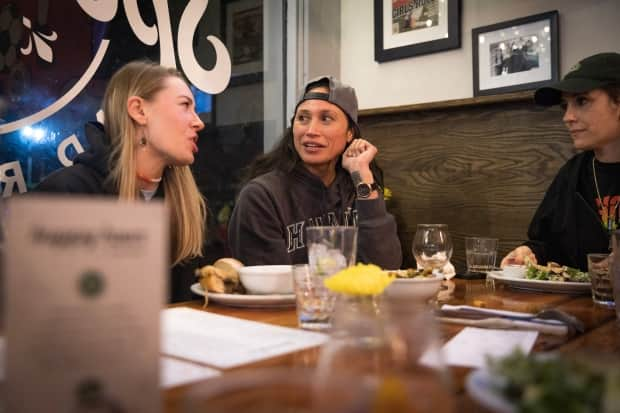Fed up with bars that wouldn't play women's sports, she opened one that plays nothing but
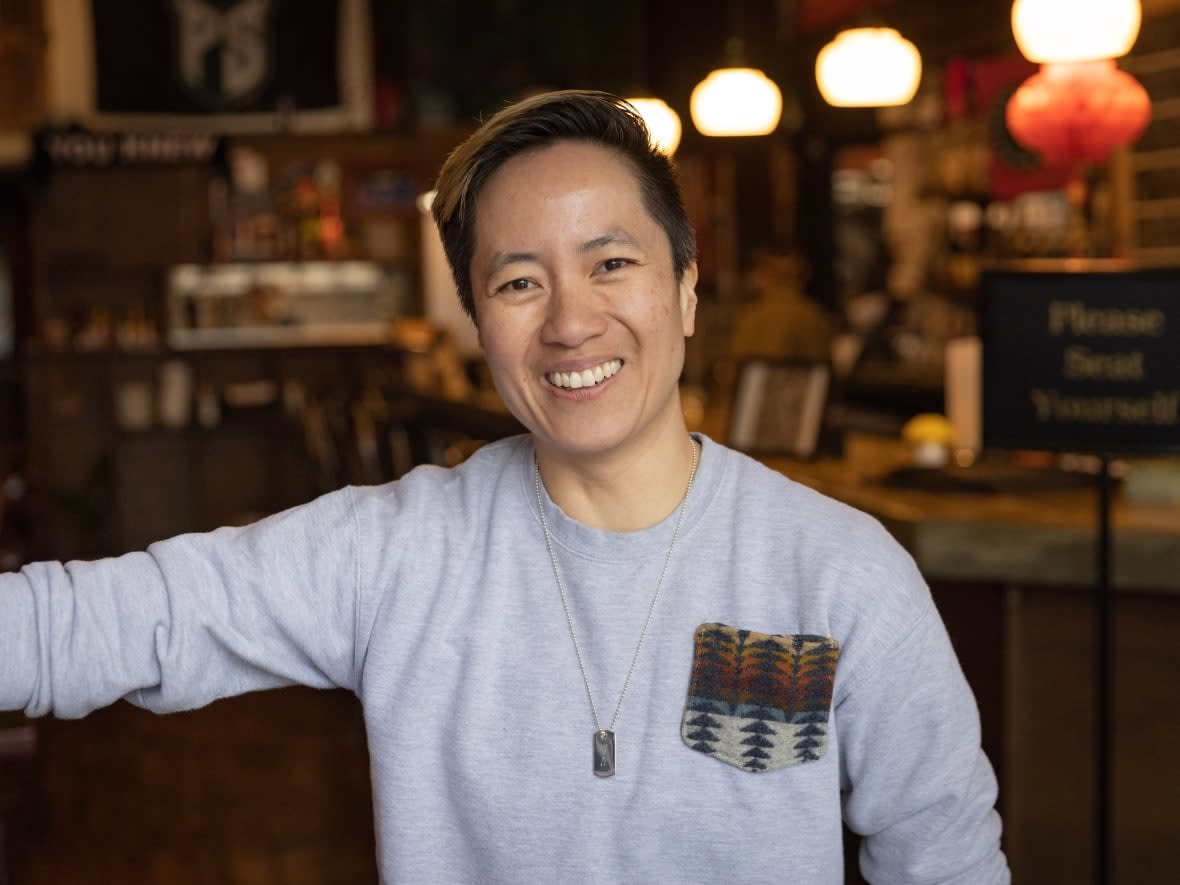
At first glance, Jenny Nguyen's sports bar in Portland, Ore., is like any other. There are rows of beer taps, autographed jerseys hanging from the ceiling, signed posters lining the walls and of course, big-screen TVs showcasing the latest game or match.
There's just one, subtle difference. The Sports Bra — no, that's not a misspelling — is levelling the playing field by showcasing women athletes. Since it opened in April 2022 The Sports Bra, which bills itself as the world's first women's sports bar, has won fans around the world by unapologetically playing only women's sports on its televisions.
"The only thing we're changing is who's on that poster? Who signed that ball? Whose jersey is that?" said Nguyen.
If there are no women's games on, staff will replay old matches. Or, to protest the lack of coverage, they'll leave the screens off. Nguyen says men's sports will never be shown at the Sports Bra because space for women's sports needs to be defended.
That sentiment is driving very public discussions about equality in women's sports around the world, with the Canadian women's soccer team's labour dispute with Canada Soccer a prominent recent example.
Players wore their jerseys inside out during some training sessions this month to protest budget cuts affecting the women's side and its support staff. The women want the same backing and preparation ahead of this summer's World Cup in Australia and New Zealand that the men's team got before Qatar.
To keep pressure on their governing body, the team and some of their opponents wore purple shirts and armbands, a colour associated with gender equality, for games during the SheBelieves Cup.
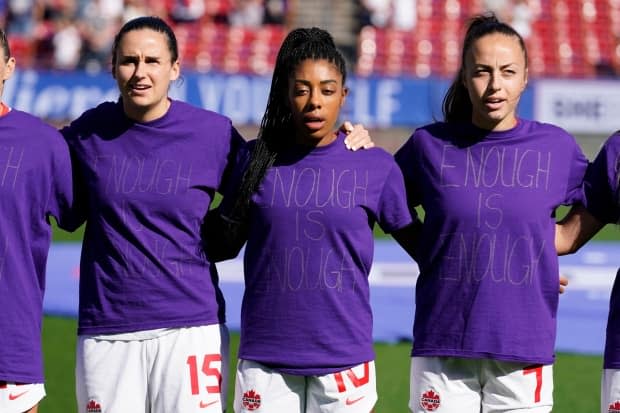
In its 2018 budget, the Canadian government set a target to achieve gender equality in sport by 2035. But studies show when it comes to current salaries and broadcast opportunities, there's still work to be done.
Between television, online and print media women's sport receives significantly less coverage than men's sport, according to studies by Canadian Women & Sport. In print and online stories alone, over 90 per cent of sports coverage in Canada is about only male athletes, according to a preliminary 2022 study by the Sport Information Resource Centre.
In the U.S., that number is 95 per cent, with a 30 year study revealing "little change" in the proportion of coverage in that time, according to research by the University of Southern California and Purdue University.
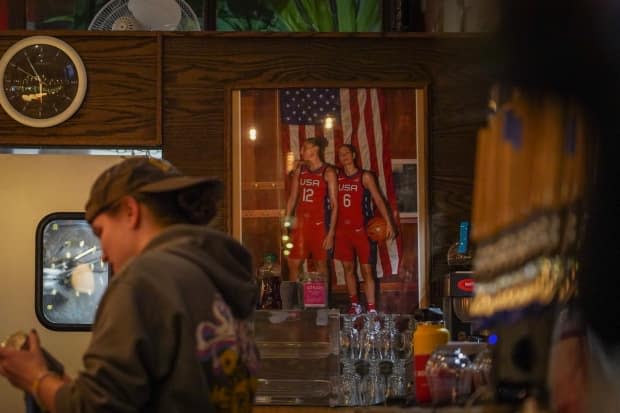
Change making
Nguyen says that persistent inequality became impossible to accept in April 2018 when she and her friends crammed into a Portland bar to watch sports. She asked for a TV to be switched from a men's game to the NCAA Women's Basketball Championship. But the bar refused to put the women's game on the main screen, so they had to watch it on a small TV in the corner.
Nguyen recalls it being one of the best games she's ever seen. "We were just screaming, high fiving. I remember I had taken my hat and I threw it across the bar because I was so excited."
When the game was over, Nguyen and her friends realized they'd watched the whole thing with no sound.
Nguyen says that's when it became clear that the only way she'd get to watch women play sports "in their full glory," was if she had her own sports bar.
But the idea didn't fully form until 2020. That's when Nguyen, moved by protests in the U.S. after the death of George Floyd, wondered if she could use her love of sports and training as a chef to create a space for more equality.
The Sports Bra was her answer.
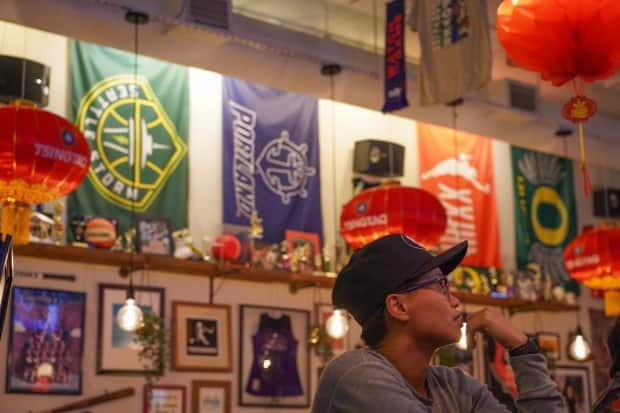
Conversations about sports culture
It was supposed to be just a bar for fans of women's sports, but Nguyen says the creation of The Sports Bra led to a conversation about how male-dominated sports culture leaves many feeling left out.
There were a lot of tears when they first opened, she says. There still are. Particularly for older women athletes in their 60s or 70s, some of whom have visited the bar and told Nguyen about how laws around equal opportunity in sport came too late to positively impact them.
"People come in and they cry and they get embarrassed," Nugyen said. "And I'm like, no, literally, it happens all the time."
IN PHOTOS | Step inside The Sports Bra:
Regulars told CBC News that the venue, often referred to as just "the bra," is an inclusive space where sports fans of all genders and sexualities can feel like they belong.
Sabrina Domingo says she enjoys the camaraderie of watching women's sports with other fans in an environment where she can "feel relaxed."
"It's important to be here because there are people who appreciate sports and want to feel included."
Challenging the system
Challenging the system that has catered to a predominantly male audience was important for Nguyen, who is also a queer person of colour.
Over the years, she says she's had experiences where, because of her appearance and sexuality, she didn't feel comfortable or safe watching sports in bars that often felt like man caves.
"If you think about traditional sports bars, there is a sense they were created for men," she said.
Despite the very limited amount of women's sports Nguyen was able to find to showcase at The Sports Bra, she says she still received backlash online from people who labelled her bar sexist for choosing to show only women athletes. The criticism wasn't something she was expecting, given the huge number of sports bars that show men's sports, but soon other fans were defending her choice.
I realized that there's an entire community behind me and the mission that will speak up. - Jenny Nguyen, owner of The Sports Bra
"I realized that there's an entire community behind me and the mission that will speak up," Nguyen said, noting that behind the scenes, she still struggles to find broadcasters and streaming platforms that can help fill her bar's niche.
"We got the sports package on cable, but still, 95 per cent is men's sports," she said. "So we're about highlighting the five per cent."
Demand growing
Demand for women's sports coverage is growing and sports channels are slowly taking notice of changing audience interests, according to Ashley O'Connor, a senior director of programming and acquisitions at ESPN.
She says that from 2021 to 2022 ESPN increased its coverage of women's sport by 60 per cent, noting the channel is "always on the lookout" for ways to showcase different sports to new audiences, but is also limited by space in its broadcasts and the already very full schedule of men's sports year round.
There are moments when women's sport breaks through to major audiences.
A TV audience of 4.4 million tuned into Canada's women's gold medal soccer final against Sweden at the 2020 Tokyo Olympics. The final professional match played by Serena Williams this summer became the most-watched tennis telecast in ESPN's 43-year history.
Organizers of the Women's World Cup in Australia and New Zealand are expecting a record two billion people to watch the soccer tournament this summer.
The number of sports bars in the U.S. dedicated to showing women's sports is also on the rise after Jen Barnes opened Rough & Tumble in Seattle in December 2022.
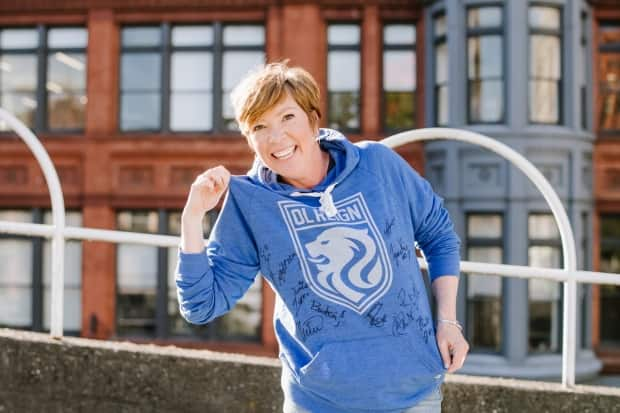
Like Nguyen, Barnes says she was driven by an urge to bring women's sports fans out of the shadows. Unlike the Sports Bra, Rough & Tumble doesn't exclusively showcase women's athletes, but instead tries to keep the coverage of men's and women's sports at 50-50 to send a message.
"My objective is to actually show what equality looks like on the screens," Barnes said. And with limited access to games on TV or streaming platforms, she says there's still "a long way to go" when it comes to equality in coverage.
Still, Nguyen says she sees progress being made and is moved by moments like the time a father brought his daughters into The Sports Bra for a meal and shed a tear while watching a women's game.
At a table with friends, Sports Bra patron Julia Paolo muses about where she might have taken her love of basketball if she'd been more exposed to women's sports when she was younger.
She didn't end up pursuing sports, but says it's joyful to be in a place that celebrates women who did.
"It's just cool seeing women succeed," Paolo said. "When one of us win we all win."
